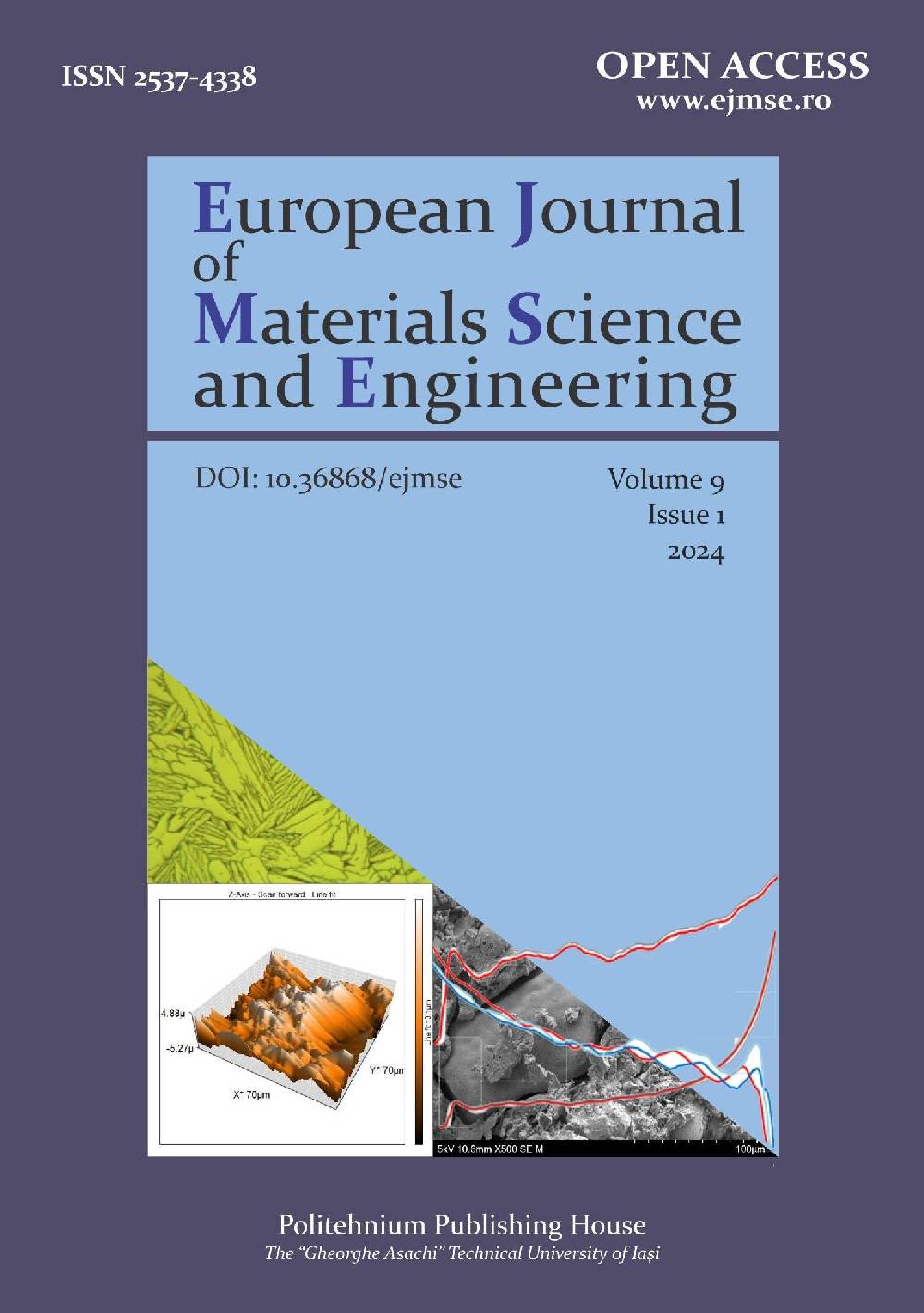THE CORROSION INHIBITION EFFECT ON THE MAGNESIUM ALLOY AZ91C’S FATIGUE BEHAVIOR IN THE SALINE ENVIRONMENT
European Journal of Materials Science and Engineering, Volume 9, Issue 1, 2024
PDF Full Article, DOI: 10.36868/ejmse.2024.09.01.019, pp. 19-28
Published: March 20, 2024
Mohammed S.R. SALEH1, Magdi E.M. EL-GAROSHI1, Ali F. Ali FADIEL1,* Hafiez M.B. KHALID1
1 Mechanical Engineering Department, Higher Institute for Sciences and Technology, Tobruk, Libya
* Corresponding author: dr_ali.f@hotmail.com
Abstract
Investigations were made into the fatigue in the magnesium alloy AZ 91C cast in corrosive fluids and air at varied NaCl solution concentrations. Fatigue specimens will be subjected to surface stress testing in corrosive conditions with a stress amplitude of 75 MPa both after and before coating. To comprehend the behavior of the magnesium material, its fatigue life, corrosion product (X-ray spectra), and fracture properties will be examined. The corroding medium (NaCl) has been found to significantly shorten the fatigue life of the magnesium alloy AZ91C. Chemical conversion treatment was applied to the AZ91C alloy to improve corrosion resistance and corrosion fatigue resistance. MgSnO3 was found in the XRD patterns of the stannite-treated AZ91C alloy, and this treatment slightly improved the alloy’s corrosion resistance in an alkaline stannite solution with a pH of 7. H2O and SEM images demonstrate that chloride ions can penetrate the substrate through porous structures.
Keywords: magnesium alloy, corrosion resistance, fatigue life, Chemical conversion treatment
References:
- M. S. Saleh, A.F.A. Fadiel, H.M. Khalida, Corrosion Rate Study of AZ91C Magnesium Alloy in Sodium Chloride Solution of Different Concentrations Using Immersion Method for Coated and Uncoated Samples, International Journal of Advances in Engineering Research, 26 (II), 2023, https://doi.org/10.6084/m9.figshare.24077319.v1
- A. Powell, A Magnesium Clean Energy Ecosystem Vision. In: Maier, P., Barela, S., Miller, V.M., Neelameggham, N.R. (eds) Magnesium Technology 2022. The Minerals, Metals & Materials Series. Springer, Cham, 2022, https://doi.org/10.1007/978-3-030-92533-8_20
- L.D.K. Catherine, D.A. Hamid, Mechanical properties and machinability of magnesium alloy AZ31 and AZ91–a comparative review, IOP Conference Series: Materials Science and Engineering, 1062(1), 2021, p. 012054
- D. Singh, D.A. Basha, L. Wadsö, D. Orlov, Y. Matsushita, A. Singh, S.S. Hosmani, Evolution of gradient structured layer on AZ91D magnesium alloy and its corrosion behavior, Journal of Alloys and Compounds, 882, 2021, p. 160659.
- K. Eldwaib, M. Aldarwish, M. Ballem, S. Garrab, S. Adrwish, The Corrosion Inhibition Effect on Fatigue Behavior for Aluminum Alloy 5052 in the Saline Environment, Journal of Pure & Applied Sciences, 21(2), 2022, pp. 18-22.
- Z. Shi, M. Liu, A. Atrens, Measurement of the corrosion rate of magnesium alloys using Tafel extrapolation, Corrosion Science, 52(2), 2010, pp. 579-588
- W. Zhou, N.N. Aung Y. Sun, Effect of antimony bismuth and calcium addition on corrosion and electrochemical behavior of az91 magnesium alloy, Corrosion Science, 51(2), 2009, pp. 403–408. https://doi.org/10.1016/j.corsci.2008.11.006
- G. Subhash, S. Ridgeway, Mechanics of Materials Laboratory Course, Springer Nature, 2022
- H.A. Richard, M. Sander, Fatigue crack growth, Vol. 18, Springer, Cham, 2016, https://doi.org/10.1007/978-3-319-32534-7
- C. Berlanga-Labari, M.V. Biezma-Moraleda, P.J. Rivero, Corrosion of Cast Aluminum Alloys: A Review, Metals, 10, 20201384. https://doi.org/10.3390/met10101384
